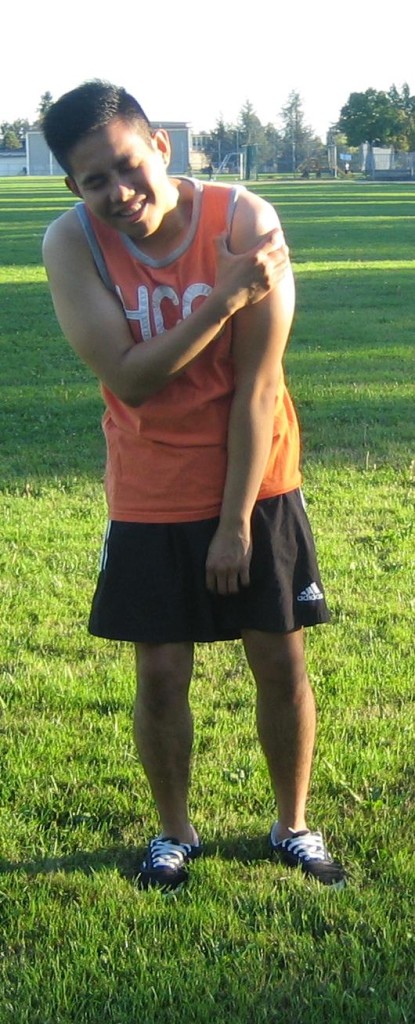The shoulder pain that manifests after bench pressing might be an indication of an injury such as a muscle strain. Always bear in mind that bench pressing focuses on the chest, upper arm and shoulder muscles which attach around the shoulder. After a bench press, the muscles can end up tight and fatigued which leads to shoulder pain.
The treatment for shoulder pain after bench pressing usually includes rest, application of ice and over-the-counter pain medications. If the individual continues the exercise despite a suspected shoulder injury, it can result to incorrect shoulder mechanics and further injury. With this in mind, a doctor should be consulted if the pain persists.
Muscle strain
It is important to note that bench pressing using a heavy weight or overtraining can lead to tight muscles, muscle strain or spasms that causes shoulder pain. A muscle strain develops once the muscles such as the chest muscles tear due to overuse or overexertion.
In most cases of tears, they occur where the muscle attaches to the tendon. The symptoms include shoulder pain, swelling, joint stiffness and muscle weakness. As for a full rupture, the symptoms are more severe along with deformity of the muscle.

Incorrect technique is also a potential cause for the muscle strain. Start lifting the wrists faintly wider than the shoulders with the knuckles upwards. Breathe in while lowering the bar slowly until the upper arm is parallel to the floor. Do not lift more weight than what the individual control during the downward phase. Always keep the bar directly above the chest while pushing upward.
Tendinitis and impingement syndrome
Tendinitis involves inflammation and deterioration of the tendons surrounding the shoulder joint. As for impingement syndrome, it occurs once the rotator cuff tendons are pinched or compressed which results to shoulder pain.
Both conditions can lead to bursitis which involves inflammation of the bursa sacs that are found around the tendons to provide lubrication. The inflammation typically occurs with overuse syndrome in which the muscles are not given enough time to recover in between workouts.
Risk factors
Always remember that tight muscles can pull on the tendons which cause significant stress on the tendons and makes them susceptible to injuries. Imbalance on the muscle strength along with tight muscles can result to poor posture such as rounded shoulders.
Rapid increase in resistance, lack of warm up and neglecting lifts that strengthen the back muscles are the usual training errors that increases the risk for shoulder pain. Other risk factors include shoulder instability, age and previous injuries to the shoulder.
Management of shoulder pain
The treatment for shoulder pain usually includes rest, application of ice, compression and over-the-counter pain medications such as acetaminophen. In case of persistent pain, the doctor might require further treatment such as corticosteroid injections, physical therapy or even surgery.

